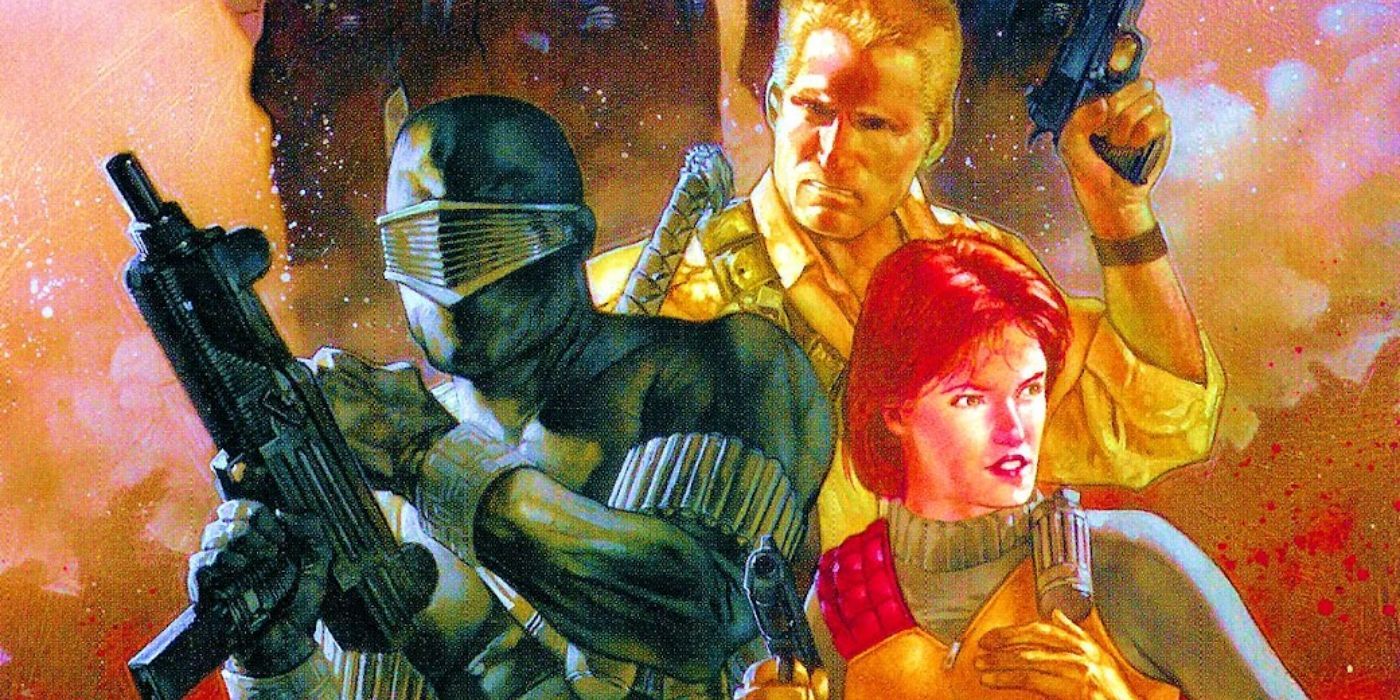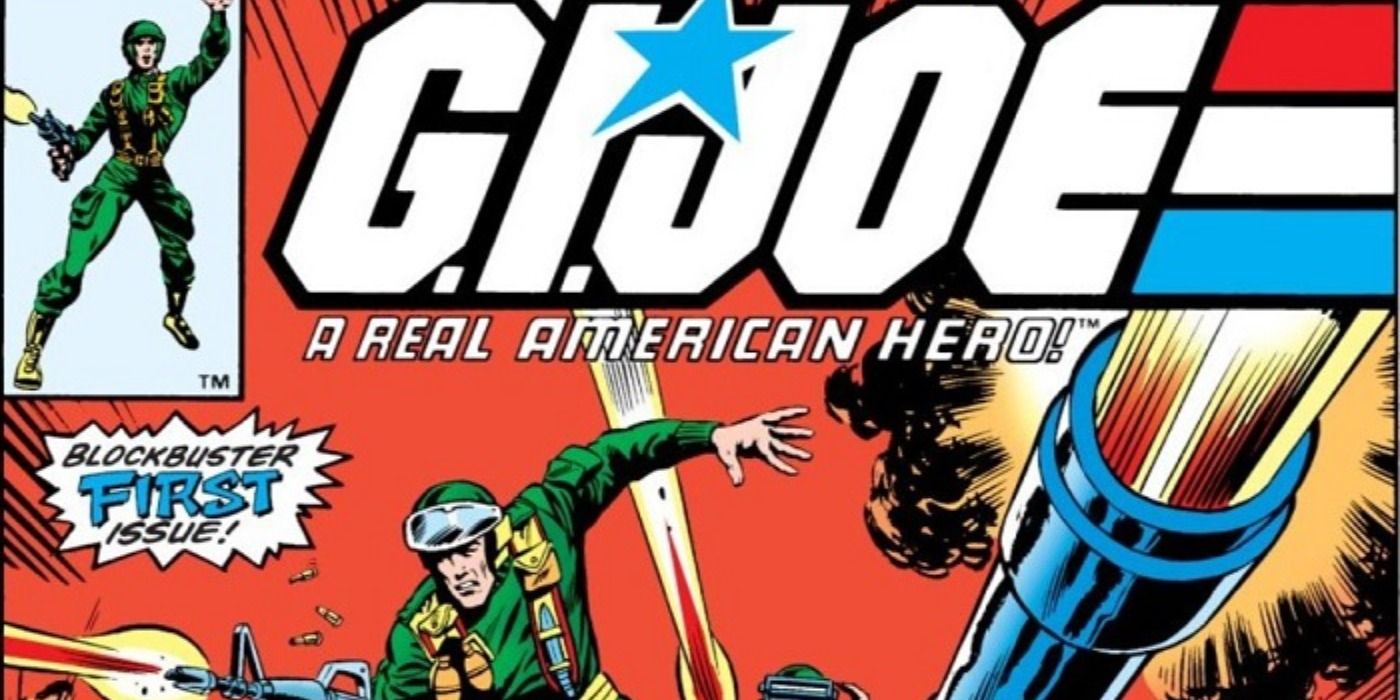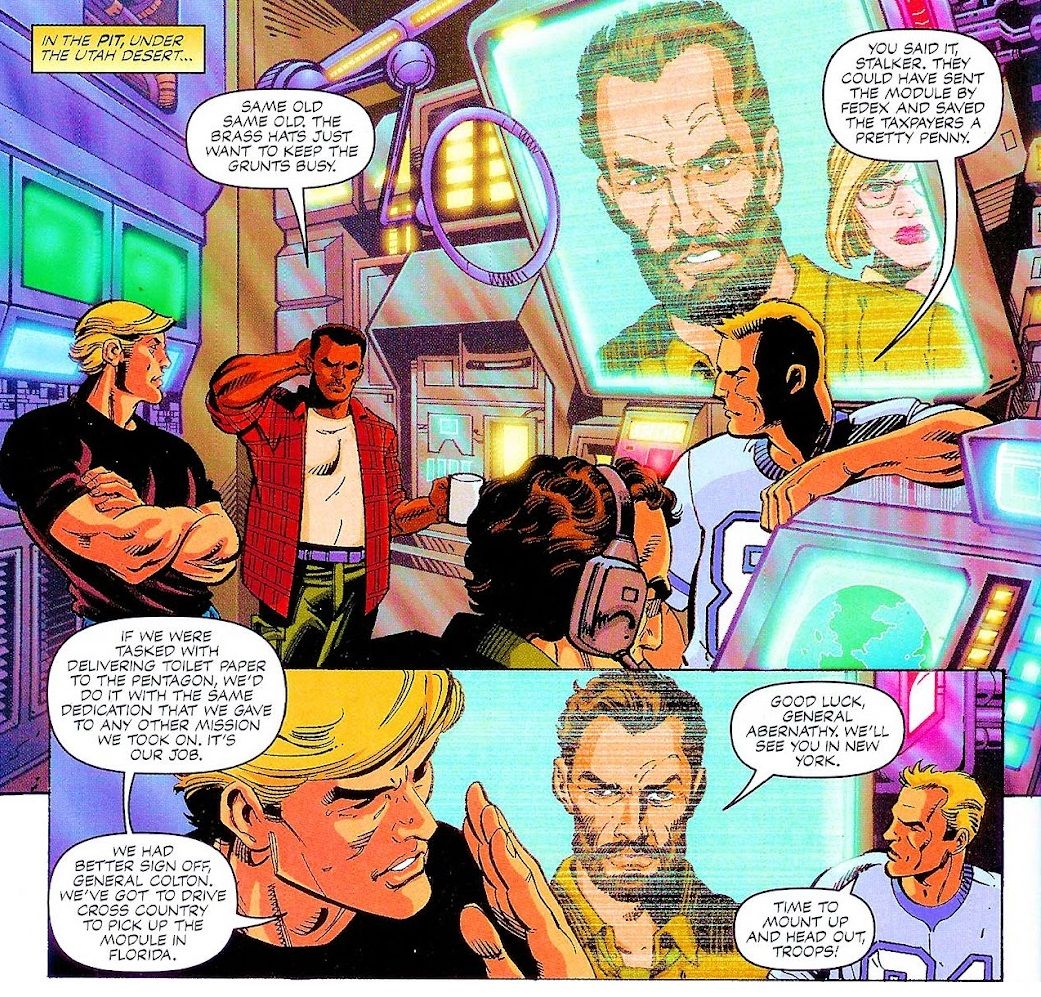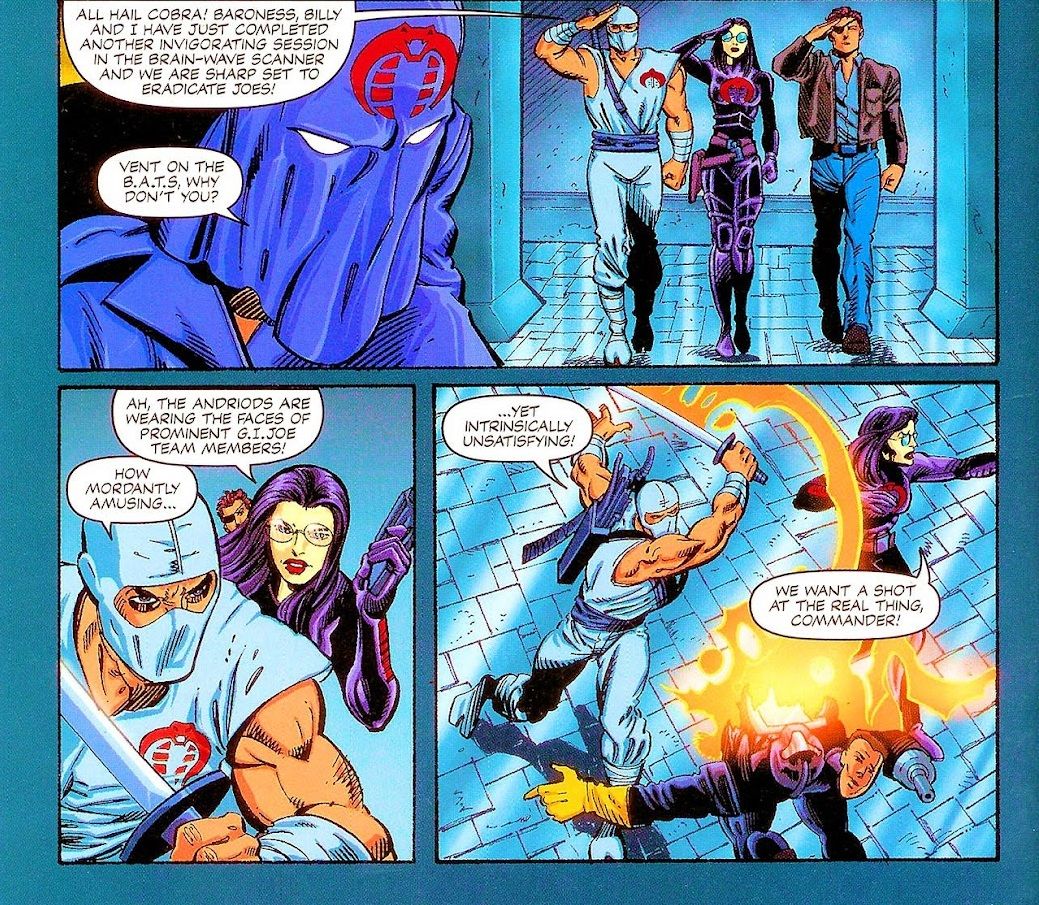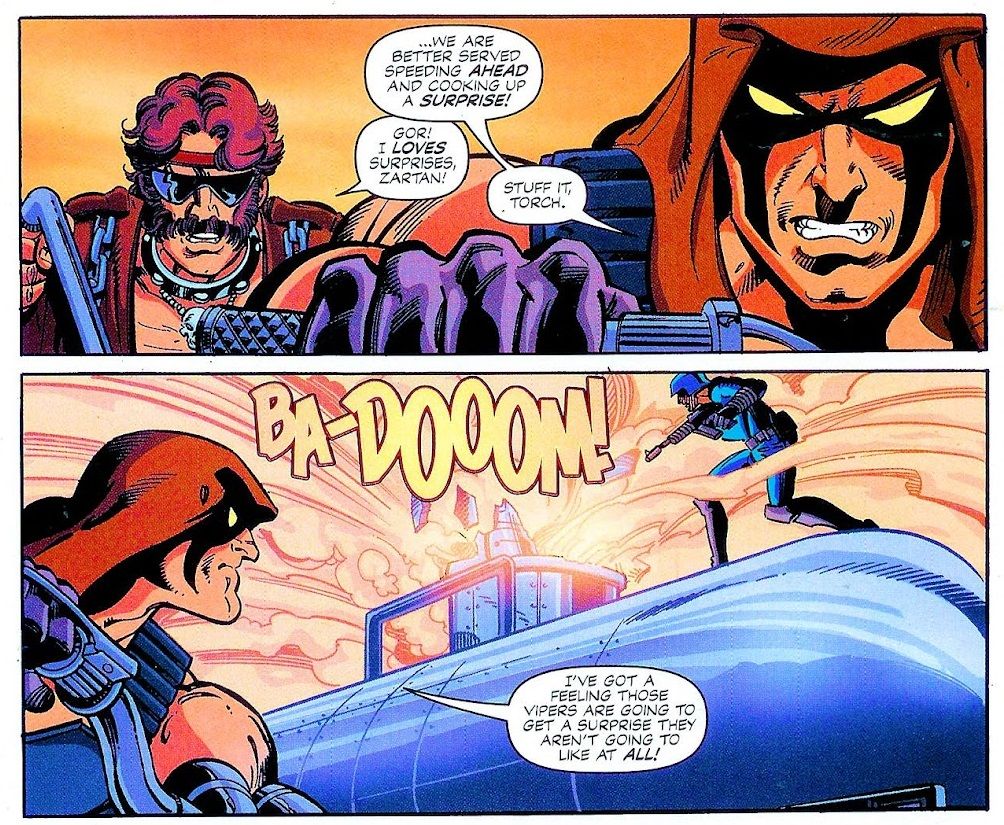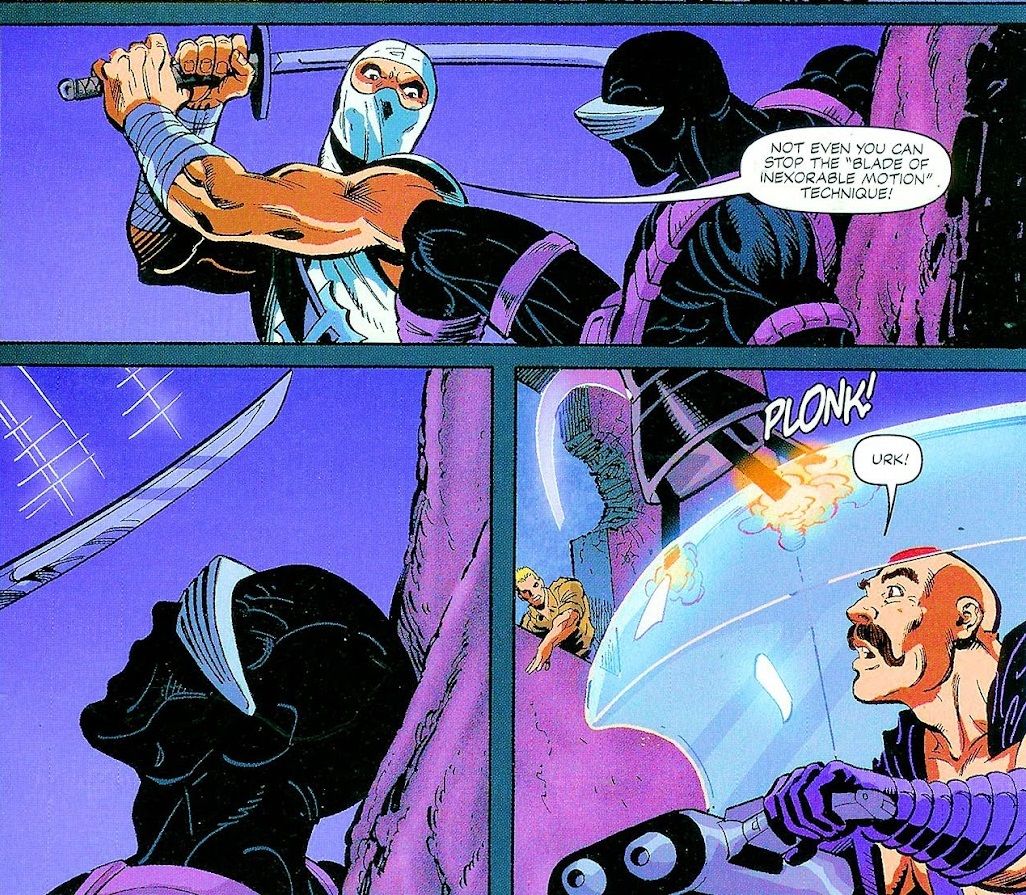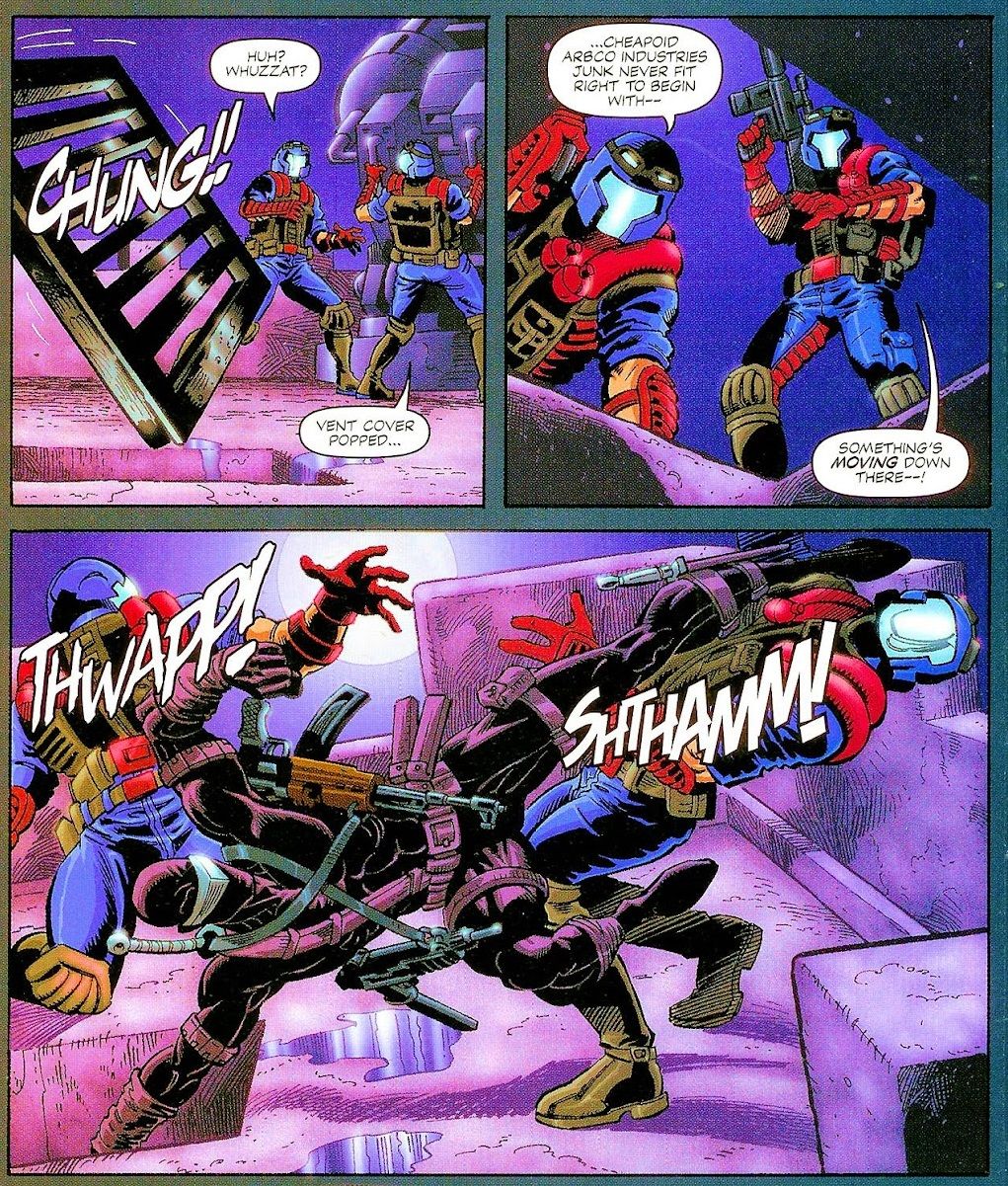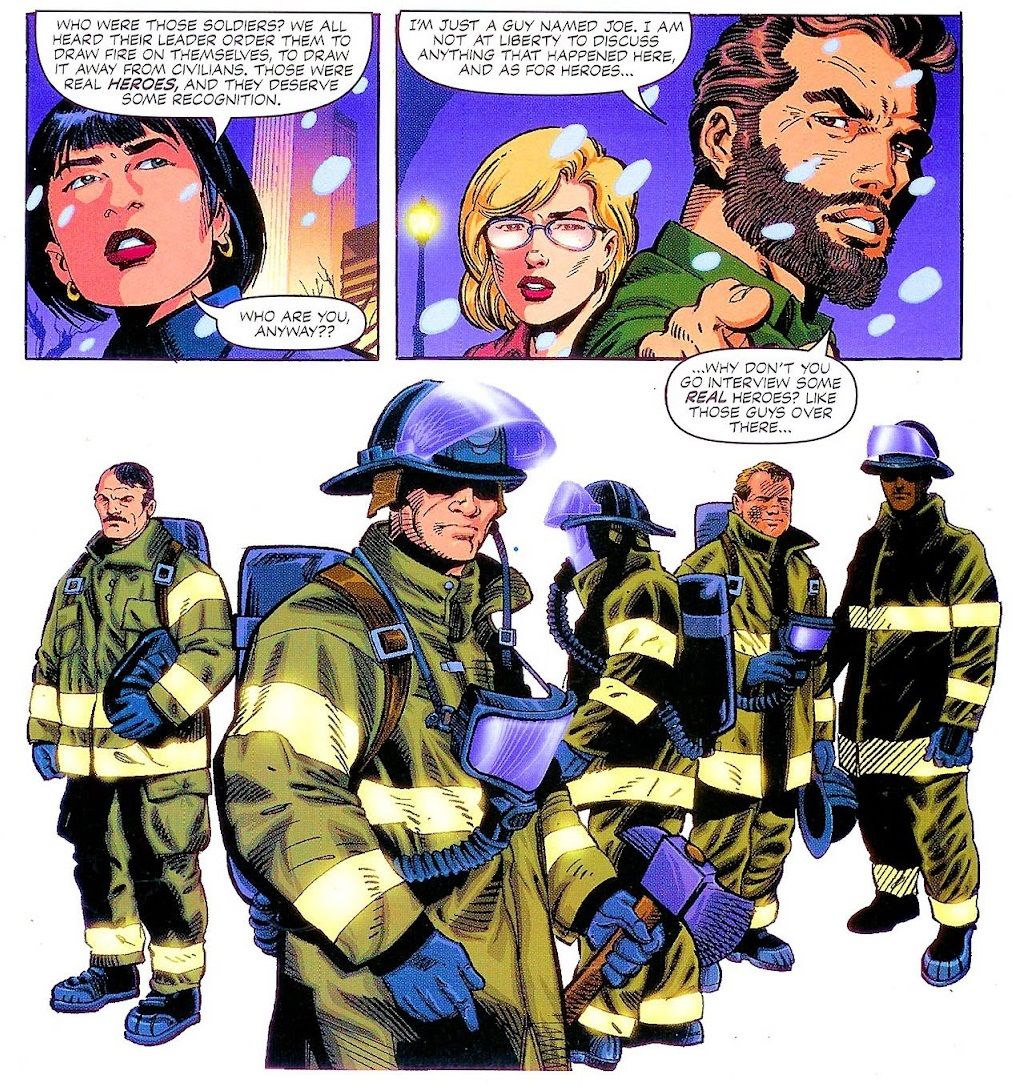Welcome to the 22nd installment of Nostalgia Snake, a look at 2000s revivals of 1980s properties; revivals now so old they're also quite nostalgic. (Hence the snake of nostalgia eating itself.) This week, another return of a legendary creator, thanks to fan demand. And if you have any suggestions for the future, let me hear them. Just contact me on Twitter.
Following a year of sales success with its relaunched G. I. Joe comic, Devil's Due made the not-exactly-shocking decision to release a monthly spinoff title in 2002. (This predates Devil's Due departing Image Comics, where the studio produced content published through Image, hence the Image branding on these covers.) The premise behind G. I. Joe Frontline was to serialize arcs from critically acclaimed creators, with an eye towards reprinting these arcs as trade paperbacks.
The idea of comics' heavy-hitters coming in with a serialized story arc then stepping aside for the next team was becoming trendy at the time. The Marvel Knights line had been pretty successful with a similar approach, and concurrently with the release of Frontline, DC had placed Jeph Loeb and Jim Lee on Batman for a finite, trade-friendly run. Anyone picking up G. I. Joe Frontline cold off the stands wouldn't exactly be aware of the series' premise, however. The only text piece is a general hype page for Devil's Due's other titles but what exactly Frontline is meant to be, is never explained in the actual comic.
"Lethal" Larry Hama Returned For G. I. Joe Frontline
Frontline's selling point was the return of Larry Hama, the creator who largely defined the franchise. The revamped G. I. Joe title had Devil's Due founder Joshua Blaylock writing the comic, a move that irked a segment of fandom, given that Hama was still available for the job. In fact, a different G. I. Joe revamp with Hama and artist Ron Lim nearly happened in 1999, but the publisher pulled out at the last minute.
While Hama's importance to G. I. Joe can't be overstated, the truth is the relaunched title was a sales success without his involvement. This indicated the "Hama or nobody" crowd wasn't large enough to hobble the Devil's Due series. Blaylock always indicated he was open to having Hama work on new material, however, and Frontline was the perfect opportunity for Hama's return.
Joining Hama would be Dan Jurgens, DC's star artist of the 1990s. While Jurgens wasn't as flashy as the contemporary "hot" artists in the '90s, his titles remained sales competitive with the various trends of the era. Jurgens' work on "Death of Superman" is rightly remembered as a top seller, but the Superman titles (anchored by Jurgens' work) maintained solid chart positions, years after that event. Impressive, given not only the increased competition during the '90s boom years, but the alleged "wisdom" that Superman was an outdated relic during more complex times.
G. I. Joe Frontline Bridged a Continuity Gap
Entitled "The Mission that Never Was," Frontline's opening four-issue arc is set explicitly in the era of Doc Martens, Melrose Place, and celebrity murder trials -- January 1995. This might seem not only arbitrary but dated today, but it makes sense in context. Marvel's original G. I. Joe run from 1982 to 1994 was in something close to real time, allowing a child the Joes encountered in a 1985 issue to be an eighteen-year-old contemplating joining the military in the final 1994 issue. The Devil's Due relaunch continued that theme, setting the story seven years after the final issue of the Marvel run. Per the solicitation hype, "The Mission that Never Was" is the bridge between the Marvel and Devil's Due eras.
The story's setup has a skeleton team of Joes sent on a final mission before the unit is fully disbanded. Their orders come from the Jugglers, a shadowy cabal of generals with political motivations and a checkered history with the team. Though General Hawk is dubious of the mission, he's adamant the team complete the job they've been given. What is this secret assignment? The team must escort a new targeting control module for the military's rapid pulse particle beam satellite from Florida to New York. It's a tiny piece of equipment that, as the Joes point out, could've easily been sent FedEx.
Bewildered, the Joes still carry out their assignment. Cobra, meanwhile, has planted a spy camera on one of the Jugglers, and believes the control module is actually experimental tech that could potentially be used to remotely brainwash individuals.
There is, frankly, an excessive amount of brainwashing in late-period G. I. Joe. Picking up where he left off, Hama also reintroduces the Brainwave Scanner, which is being used to keep Baroness, Storm Shadow, and Cobra Commander's son Billy loyal to Cobra. While Hama did have clever angles on the concept of brainwashing, by the end of the run, it seemed to be a gimmick to reset the clock and return characters to their previous status quo.
Frontline Reintroduced The Greatest Hits of The 80s
Using this arc to revisit the greatest hits isn't a surprise, and neither is the cast. Represented are the "peak era" characters, with a Joe team consisting of Hawk, Snake Eyes, Scarlett, Stalker, Gung Ho, and Duke, and Cobra staffed by recognizable figures from the toyline's earliest days.
Following an ambush from Zartan and his Dreadnoks, the Joes flee to the Georgia coast where they commandeer a Vietnam-era river patrol boat from a vet and continue their trek to New York. When Cobra again ambushes, the Joes draw fire on themselves and away from nearby civilians. This enables Destro to steal the module, which sets the stage for the Joes' eventual assault on his Silent Castle. This specific locale was the setting of G. I. Joe #21's famous "silent issue," which introduced the Snake Eyes/Storm Shadow rivalry and shocked fans for containing no dialogue or narrative captions. Again, we're getting the "greatest hits," here.
Snake Eyes infiltrates the castle and once again faces Storm Shadow in a battle so enthralling, the Joe and Cobra forces pretty much stand back and watch. Convinced the Joes have no hope of retrieving the module, Hawk orders a remote laser strike to destroy it. The twist is…the Jugglers wanted Cobra to have this thing all along. In actuality, it's a device programmed to deliver a sophisticated virus into Cobra's systems. The Joes were kept in the dark in order to sell Cobra on the lie. Assuming the module was destroyed in the strike, the Joes enter retirement, convinced they failed their final mission.
Unbeknownst to the Joes, Destro anticipated the strike and saved the module. The virus has entered Cobra's system, slowly disrupting Cobra operating systems and hobbling their Brainwave Scanner. Consequently, Storm Shadow's loyalty is waning, inspiring him to leave Cobra and attempt to find himself elsewhere. Meanwhile, the Joes adjust to retirement, and although Snake Eyes' beloved pet wolf Timber has passed away, one of his cubs joins Snake Eyes and Scarlett at their mountain cabin.
G.I. Joe Frontlines Was a Faithful Send-Off
The arc's focus is chiefly on the action, but there are some uniquely Hama touches throughout the story. The series' idiosyncratic blend of realism and absurdity is present in little moments, like when an exasperated Destro questions why he never installed an elevator in his multi-story castle. A consistent theme is loyalty and obligation, not only the Joes' commitment to doing a job they find confusing and pointless, but also in Snake Eyes' determination to save Storm Shadow from Cobra. Something he doesn't personally accomplish, and is ultimately achieved through the Jugglers' machinations.
The days following the 9/11 attacks also enabled Hama to dramatize a perspective repeatedly presented in the original G. I. Joe comics -- those asked to serve will never receive their proper due from those who haven't. Cobra's Manhattan ambush occurred only blocks away from the World Trade Center, and in the second issue's final pages, a news crew covering the event interviews nearby firefighters.
When making a point about just how difficult it would be to fight a fire inside the Towers, the news crew cuts to a commercial while the firefighter is still talking. "Soldiers and firemen are the same to us newsies," the camera person bluntly states. "If they aren't winning a battle or saving a baby, they just aren't news."
While this was his first (and so far only) G. I. Joe comic, Jurgens stands out as one of the franchise's best artists. The characters are faithfully on-model, the tech looks consistent and believable, and the action is always easy to follow. Jurgens excels at blending traditional mainstream styles with just enough dynamism and cartooning to keep the pages interesting. A diehard might criticize Jurgens for getting Duke and Hawk's hairstyles mixed up (and it's amusing to think that, after decades, nothing's been done to give the characters more distinctive faces), but these are undeniably some of the nicest-looking Joe issues ever produced.
Ultimately, was this arc enough to appease fans of classic G. I. Joe? Fan response wasn't overly enthusiastic or critical. The story didn't reinvent the wheel or contort itself in ways to "grow up" with the reader. The trade's long out of print and Hama himself didn't care to acknowledge this story when later reviving this continuity for IDW. It's a straightforward Joe action story with nice art. Adults with no history with the franchise likely won't be converted, but it's an entertaining nostalgia trip for those who remember Joe's glory days.

